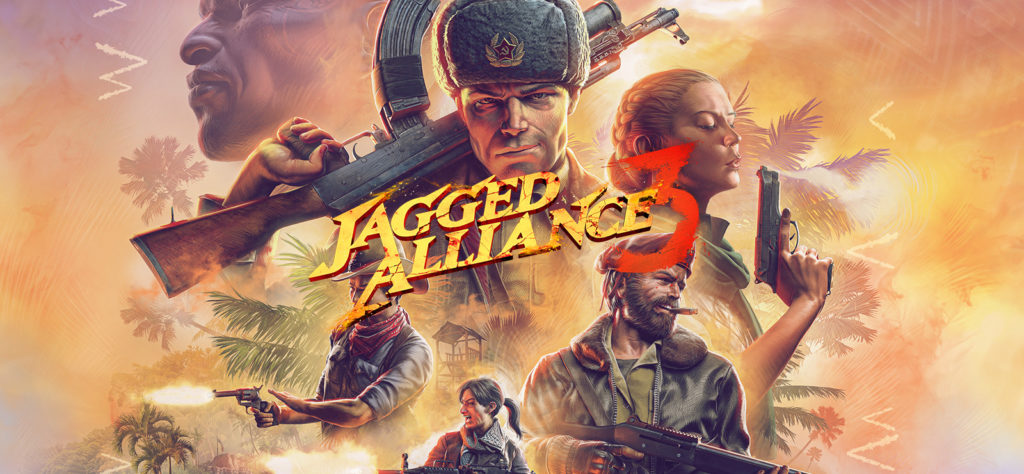
It has been over twenty four years since Jagged Alliance 2 released on PC which was the last major game in the series though a stand-alone expansion Jagged Alliance 2: Unfinished Business was released in 2000 — a few years before the demise of Sir-Tech which had been better known for the Wizardry series which also saw its eighth and final release in 2001. It wasn’t too long after that the series rights were picked up by Strategy First that Jagged Alliance 3 was announced. It was supposedly in development by different studios in the following years but ultimately never came to be. The series continued in name only with the most notable releases being re-workings of Jagged Alliance 2 including a remake that departed significantly from the gameplay that made the series so popular. During this time of sporadic and disappointing releases there was one hopeful announcement in 2013 when Dutch developer Full Control successfully crowdfunded Jagged Alliance Flashback on Kickstarter. This released the following year and I bought it but it was quickly apparent that they had neither the resources or the budget to create a worthy sequel to the series but they did at least try. That game was unfinished, abandoned and forgotten though it can amazingly still be purchased. Jagged Alliance: Rage followed some years later which was by all accounts even worse. This video which was published after this review does a decent job covering some of this history though with a few mistakes along the way.
The series has been in a sad limbo ever since Sir-Tech’s closure. It never fully died but passed on to different developers and publishers for years with a number of disappointing releases. There have probably been multiple different versions of Jagged Alliance 3 started and stopped during this time. So when I first heard the latest announcement for Jagged Alliance 3 in 2021, I didn’t expect much to come of it. There were reasons to be hopeful though as it had an experienced developer Haemimont Games with demonstrated competence and the much needed backing of the publisher THQ Nordic. The most significant news came when one of the original series’ designers Ian Currie was brought on board. Currie and his wife Linda along with Shaun Lyng were the biggest names behind the original series. Even with this, I still took little notice of the game until just a few months before it released and only purchased it when the initial reviews were positive. After so long it was easy to be skeptical but my low expectations were thankfully mistaken.
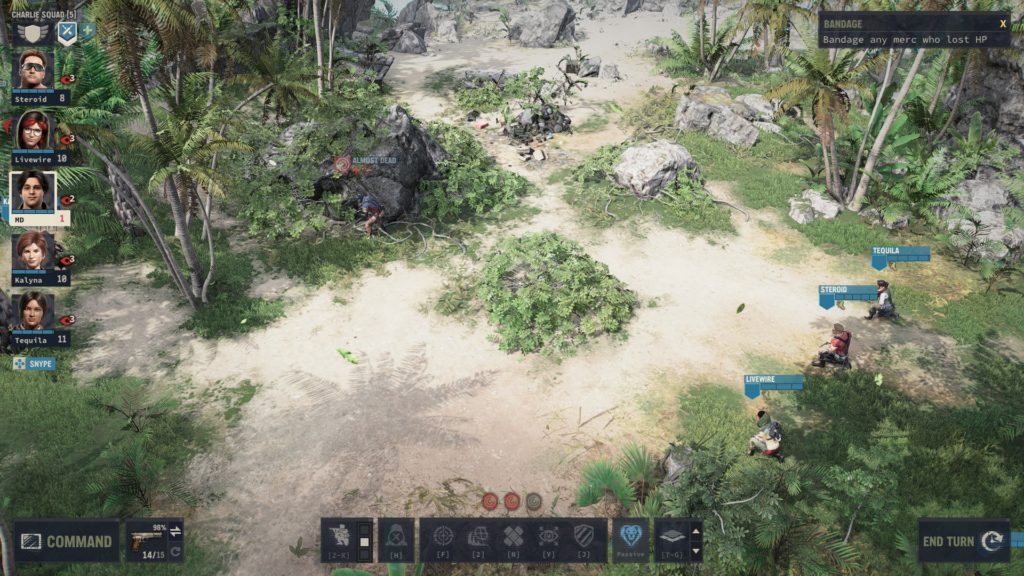
I have previously written about both Jagged Alliance and Jagged Alliance 2 . The series is not just a personal but a family favourite since the original release in 1995. Many only came to the series with Jagged Alliance 2 in what are still rightly regarded as the golden years of PC gaming — especially for RPGs. This is not to belittle the latecomers as one of my other favourite series is The Legend of Zelda which I began following from the fifth major release. That I’ve been with the series since the beginning simply means I have had direct experience of how it has evolved and can consider the third entry uniquely in that context.
Following commentary on the game has been interesting and the criticisms I’ve seen have been frequently contradictory. A good example is the complaints about the lack of “chance to hit” calculator for weapons which has never been a feature of the mainline series. There are already mods that introduce this but this is a strange complaint to hear from anyone familiar with the previous games. Then there are complaints about the introduction of “Overwatch” which replaces the “Interrupt” mechanic from previous entries. “Overwatch” is a mechanic in the XCOM series though it works a little differently in Jagged Alliance 3 with the player having to set a specific zone for mercenaries to target. The width of the radius also changes based on certain factors including the type of weapon being used. These two examples neatly illustrate the challenges the developers were always going to encounter. On one hand, keeping the mechanics too similar to the originals will provoke complaints from those familiar with other turn-based tactical games and on the other, any changes can also provoke complaints from series veterans. So while I don’t necessarily like all the new features, I can see what the developers would have been dealing with from the outset and I think they definitely struck the right balance in the final product
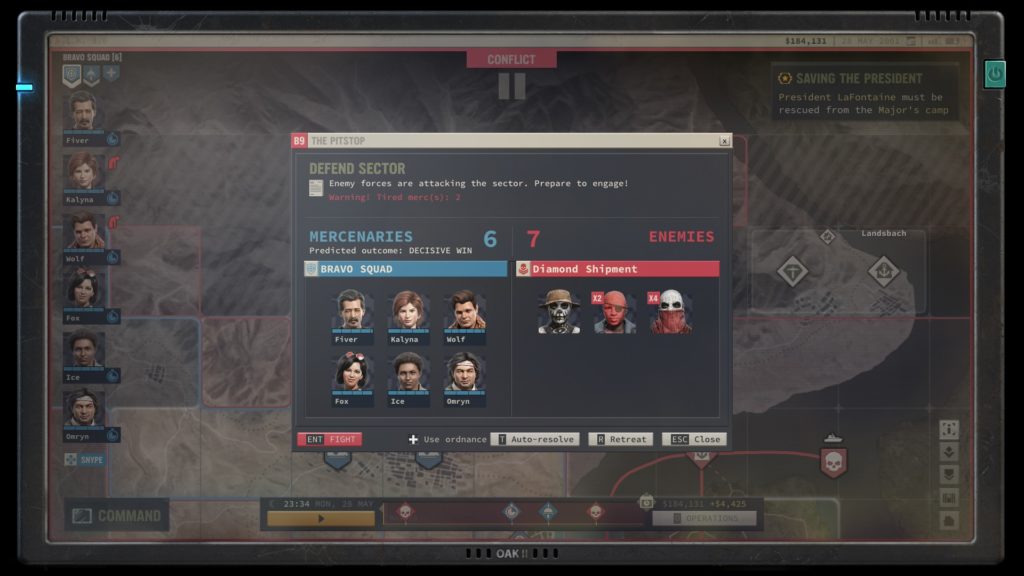
I know they did because I found the game as engaging and addictive as the originals — which certainly still had their problems. The highest praise I can give the game is that it truly does feel like a sequel to the original games. It plays differently in some ways for sure, but so did Jagged Alliance 2 to the original and mostly for the better. The original game didn’t allow burst fire for automatic rifles, limited mercenaries to eight, had no towns or settlements and limited RPG mechanics. It was set on an island divided into sixty sectors and all but the starting sector had enemies. It was basically fifty nine separate combat encounters and more should any sectors again fall to enemy counter-offensives. It was still a really fun game but I’m not sorry Jagged Alliance 2 changed or expanded on much of this. This is true of Jagged Alliance 3 as well. There are a number of changes to the gameplay but it certainly plays more closely to Jagged Alliance 2 than the original.
What has always differed Jagged Alliance from other turn-based tactical games are the characters. The original game had sixty four fully voiced characters to choose from. It was developed when CD-ROM was new and offering way more storage space than most games needed. So the developers took full advantage of this by including an incredible amount of voice work. So much so in the case of the original game that even item descriptions had unique recordings. Though the voice work is amateurish compared to games today where it isn’t uncommon for famous actors to take voice roles; this feature still did a lot to bring the characters alive. There were the ones you loved, the ones you hated and many more in-between. The characters also had some interaction with each other with some liking or loathing other mercenaries and this was often mutual. The stand-alone expansion Deadly Games added a few more to the roster and a number of these became favourites that then returned in Jagged Alliance 2. The sequel didn’t go quite as mad with the voice work but had 65 different recruitable characters to choose from and many NPCS and the quality of voice acting was much better.
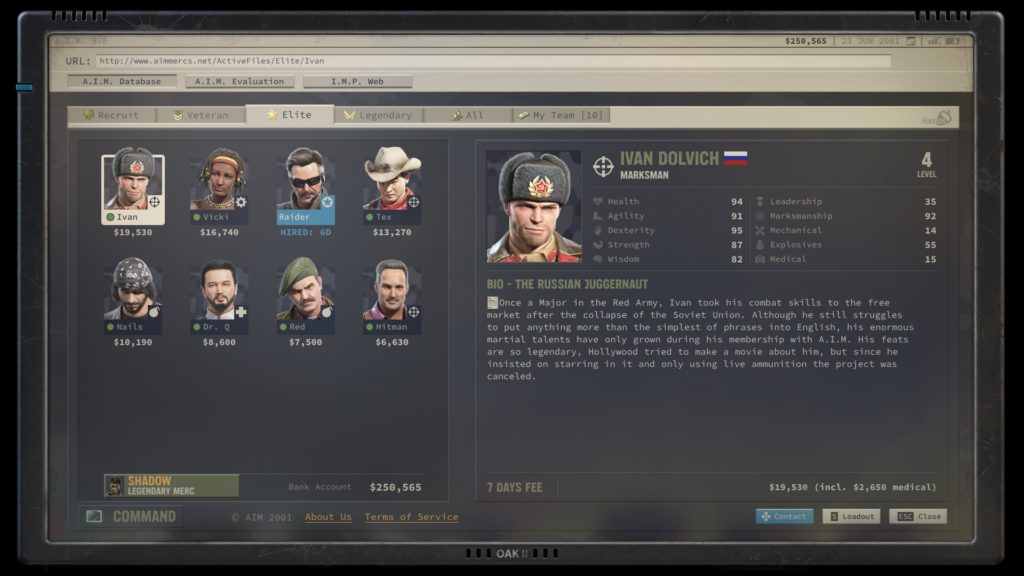
Jagged Alliance 3 has 42 recruitable mercenaries which is less than the previous games but the dialogue is expanded and many have more personality than ever before. There are many context sensitive conversations and interactions to be experienced and also many fully voiced NPC characters as well. The enemies also interact more in this game such as crying out when flanked, surprised or calling for help. I was initially disappointed with the smaller mercenary roster but then I remembered that in the previous games relatively few of the mercenaries were worth hiring. Haemimont has also done an excellent job of curating returning mercs as well as creating new ones. Favourites such as Ivan, Shadow, Gus, Magic, Scully and Scope make a return and though I assume the voice actors have changed, they still feel familiar. Some other changes include them having special items related to their skills or personality such as Ivan’s ushanka and Vicki’s special locksmith kit. There are some great newcomers too with Ukrainian Kalyna becoming a quick favourite of mine. Players can also create their own character but the portrait and voice options are more limited than they were in Jagged Alliance 2.
The original game had fairly light RPG elements. There were some side-quests but gameplay was very combat focused. Jagged Alliance 2 expanded this with the ability to interact with voiced NPCs with options to be ‘Friendly’, ‘Direct’, ‘Threaten’ and ‘Recruit’. This had different effects depending on the character and situation. Jagged Alliance 3 adds dialogue options and a more robust series of side-quests. Many decisions have consequences though there is more often than not a “right” thing to do. As with the originals, the decisions and events can impact the ending. The map screen is also more helpful with keeping track of quests with recorded notes and map markers available though this was not intuitive and I didn’t discover this until late in the game.
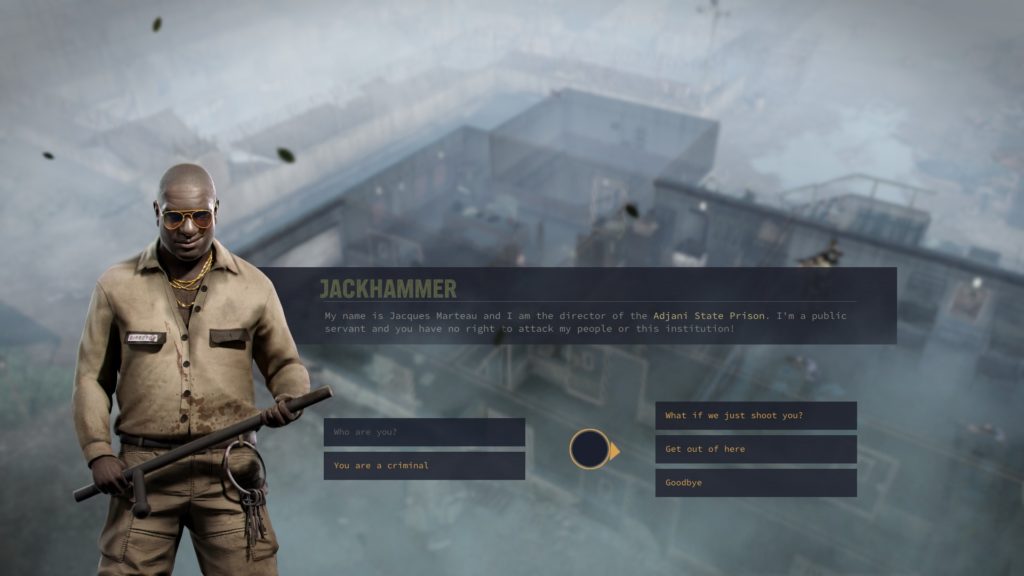
Though the meat of the series has always been the turn-based combat, it was easy to spend a long time on the map screen in planning, gearing and organising mercs for battle. This was still the case with a number of expansions and improvements on the previous games. There are still options for training militia at towns, mines and outposts. Mercenaries can be trained, set to repair items, give or receive medial aid and rest. New to the series is the ability to craft ammunition which will be very useful as certain type can become scarce. This requires some materials to do and a competent explosives expert. Weapon modification has also been expanded and multiple changes can be made to many weapons with the right parts and a competent mechanic available. This screen also has a large model of the weapon shown while doing this which looks really impressive. Another new feature to the map is the ability to gain intel and send mercenaries to scout surrounding sectors. This can provide detailed information about enemy movements and helps to fend off counter attacks and intercept patrols.
While some might not like the still images used for NPC characters, the game is visually impressive. The series has never been known for its visual design and Jagged Alliance 3 won’t push a relatively new computer too hard but it still has some beautiful art design. The mercenaries now have there own unique character models and are readily recognisable on the battlefield which is a first for the series. Adding body armour or other gear does not change their appearance but this was not true of the originals either. There are also a wide variety of different terrains including jungle, savannah, coastal and a variety of unique urban environments. Environmental conditions that effect combat such as fog lowering visibility and heavy rain causing equipment damage give these environments even more contrast. The camera is also now fully rotatable which is useful as buildings and foliage can now get in the way and players can still toggle different levels of elevation as in Jagged Alliance 2 and even zoom in on sectors and the map screen. A nice touch is that the title screen will change depending on where your mercenaries are located and have them in various animated poses. This is a little touch but it is one of the many small touches that shows the care that went into the game’s development.
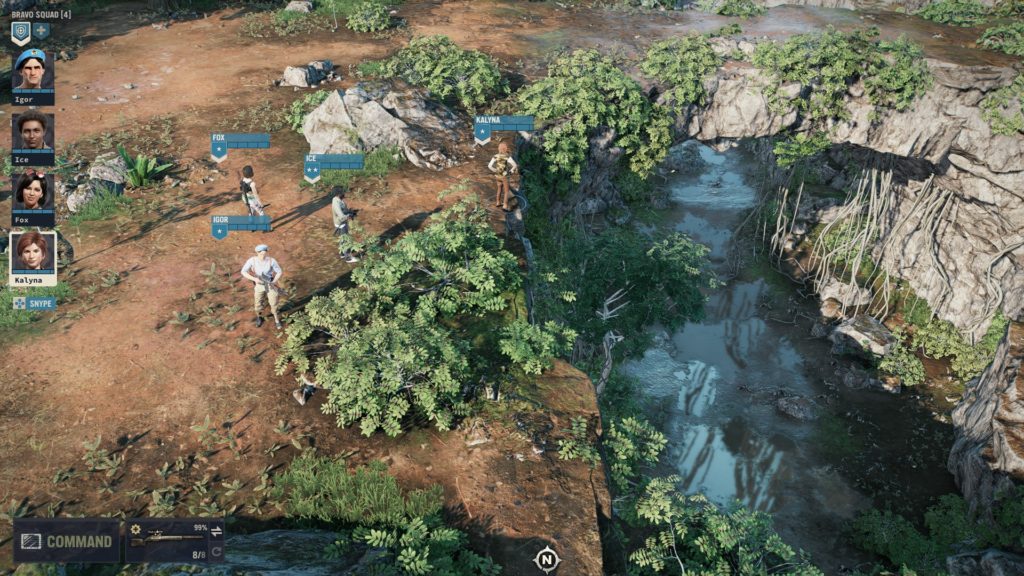
Jagged Alliance 3 takes place in a fictional African nation called Grand Chien. The locals are mostly African and speak in a French dialect suggesting it was a former French colony. A number of characters that appear are French (as in European) too. The originals were set in fictional Spanish-speaking settings around south or central America though Arulco had quite a variety of people living there including rednecks, German arms dealers etc. Though most of the characters are African, there are still a variety of different races and ethnicities found in Grand Chien which is certainly consistent with previous entries. The plot concerns the kidnapping of the nation’s president by a mysterious figure called ‘The Major’ who has control of a large militia known as ‘The Legion’. The initial goal is to assemble a team of bad dudes to rescue the president but there is naturally more to it than that. The original games allowed a degree of freedom in conducting the campaign but the end goal was located in the farthest and most heavily defended part of the map. This is not the case for Jagged Alliance 3 and I thought the change to the formula was a great design decision though I can’t really explain this further without revealing significant details that it is better to experience.
The combat has obviously received the most attention during the game’s development and it is certainly as addictive as ever. Some additions are a more robust cover system with indicators showing whether an object will provided cover as well as how solid it is. Many objects in the game world are destructible including walls, fences and vehicles and this can have a big tactical impact on a battle. Mercenaries are still able to crouch, lay prone and sneak around the battlefield and even climb or vault over certain areas and objects. The weapons have varying effective ranges which is indicated visually and single, burst and auto fire are available depending on the weapon type. Players can also choose which body parts to aim for such as aiming for the legs or arms of enemies that favour melee weapons or for enemies wearing body armour. One big addition is the inclusion of machine guns including mounted positions in certain sectors. They can have a significant effect on the battlefield when used correctly and a devastating one if the player leads his mercenaries unawares into the firing radius of one.
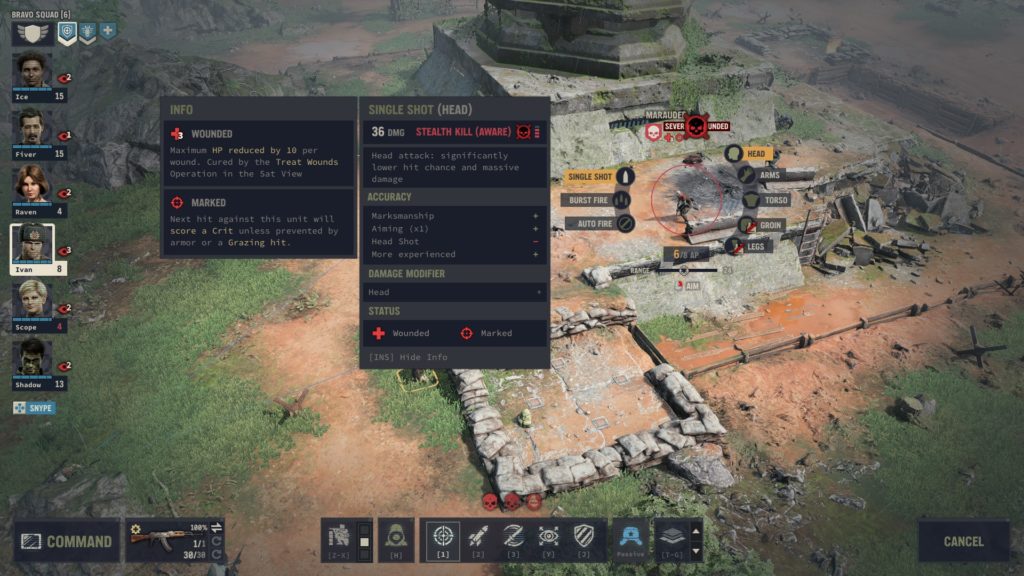
This leads to two of the most significant inclusions. Mercenaries are allowed to move freely even when getting a visual on an enemy (as long as they remain unseen) and can even perform stealth kills with a knife or a weapon equipped with a suppressor. As long as another enemy doesn’t witness the attack or discover the body — turn-based combat does not begin. There is also a chance to avoid it beginning if a kill is made and an enemy is given a “Surprised” status as long as this enemy is taken out on the next move. Usually enemies are in groups of two or in close enough proximity to notice if one falls but there is still plenty of opportunity to thin their ranks before beginning combat proper. I managed on a couple of occasions to clear an entire sector this way but much more often than not this won’t happen. The other big feature is mercenaries now have unique special abilities. These can be active or passive but allow mercenaries to do things like ‘automatically move to one location while taking shots at a nearby enemy or override enemy body armour. There are a variety to use and discover and dedicated console buttons and keyboard shortcuts for these actions and items like grenades also streamline gameplay.
The series has always had a progression system for mercenaries with the ability to improve traits and abilities like strength, marksmanship, dexterity and health by training as well as through experience. Mercenaries can now also find magazines that improve these by one point instantly but these are relatively rare. There is also an additional leveling system that unlocks further perks based on the mercenaries strengths. The lowest tier requires a minimum value of 70 (out of 100) and the highest at least 90. These also allow players to effectively create specific classes such as a melee expert or a sniper based on the perks chosen. It also incentivises hiring cheaper mercs as they can become formidable and comparable to the elite group towards the end game while remaining much cheaper.
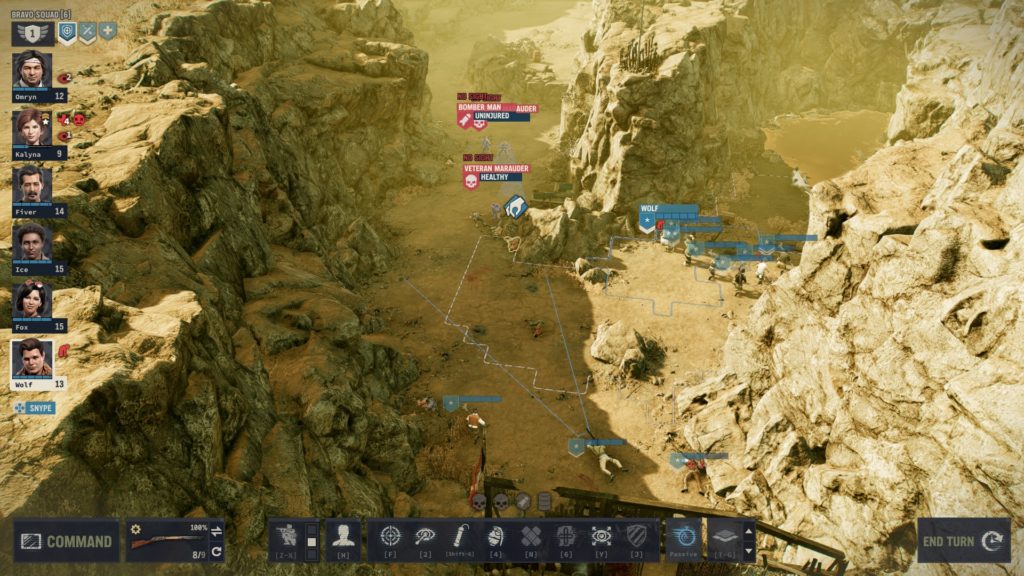
Managing expenses is still part of the game and initially at least, much more difficult. The nation’s diamond mines are the main source of income as well as being the main source of the strife the nation has found itself in. There are a number of diamond mines usually found around settlements which can be captured to provide stable income. The amount received varies on the loyalty these settlements have towards you which encourages helping out the locals in various ways. There are also frequent opportunities to intercept diamond smugglers and acquire the diamonds for the cause. As well as this, small amounts of cash can be earned by performing certain tasks and hacking or breaking into computers and other systems found throughout the game. The initial scarcity of funds makes hiring the cheaper mercs the best option and it wasn’t until late into the game that I hired any of the elite mercenaries.
Another significant new feature though one I have not tried as of writing is the introduction of co-operative multiplayer. This is the first time in the mainline series since Deadly Games as I haven’t experienced it but it is certainly a welcome inclusion. Beyond this there are plenty of little details such as Easter eggs, series callbacks and the little touches mentioned above. Every sector I visited has at least something to find and there are plenty of surprises such as some nasty encounters with Grand Chien’s wildlife. I spent a lot of time looking around the map on my first playthrough and upon starting again, I still discovered a lot of things I missed on the first playthrough. The robust save system helps with this as there are frequent autosaves and the ability to name each playthrough and have all saves grouped under that name is very helpful. Quick save options remain but can also be turned off in combat as many series veterans certainly prefer the games at their most unforgiving. Lastly, the soundtrack is fantastic with an impressive variety music including some suitably intense battle themes and some African themed compositions that well suit the setting.
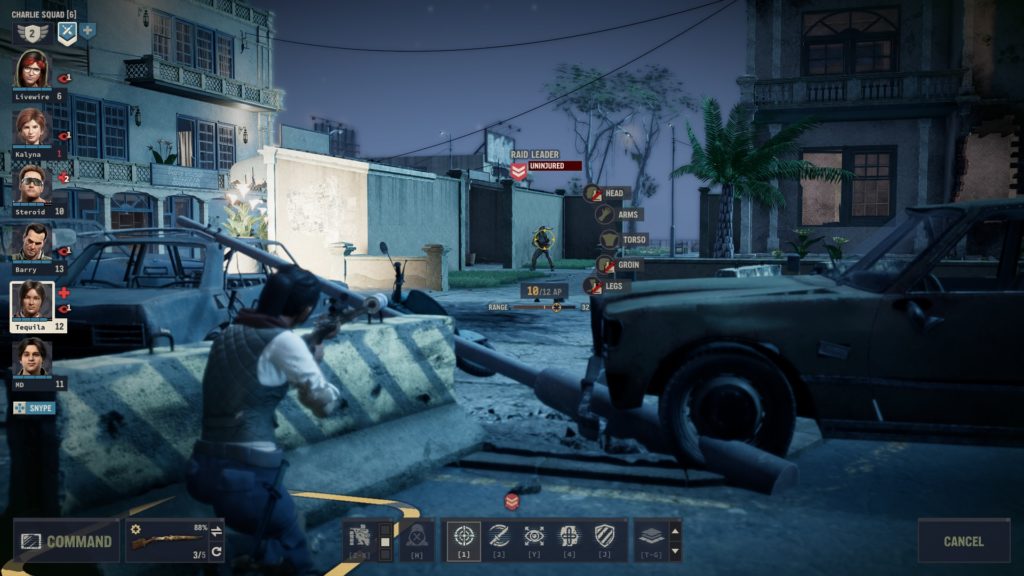
I have been effusive in my praise thus far but there are certainly problems with the game. One missing feature is the lack of the weapons shop Bobby Ray’s from Jagged Alliance 2. Instead, players will most have to use what they find which is mostly true of previous entries though there are weapons and other equipment available to purchase around Grand Chien. Bobby Ray’s didn’t offer much stock variety in stock until late in the game but it still would have been great to see it return. As mentioned, the overall weapon arsenal is smaller than the one found in Jagged Alliance 2 but even early weapons can remain useful until late into the game especially with thoughtful modifications. I had characters still wielding SMGs, shotguns and pistols until the end which was unusual in previous entries. Mortars and RPGs return though they are understandably scarce especially as explosives are very effective in combat. The sniper rifles are also extremely effective and I had three of my mercs equipped with them. The other issue that has already been mentioned is the smaller character roster which is somewhat mitigated by virtually every available character in the game being useful whereas previous entries had a number of mercenaries that were only useful as human pack mules.
Jagged Alliance 3 is a huge game that will take a great deal of time to complete and has many difficulty options and choices available to expand it further. Something that didn’t occur to me until the splash screen warning me was just how out of line the game is with the politics found almost uniformly among gaming journalists. Thinking back, the series has always been this way but it is made all the more refreshing today that Haemimont has continued this aspect of its legacy. It is a further testament to the series legacy that Jagged Alliance has never been a big seller or well-known but that it has made enough of an impact for the name to live on. Jagged Alliance 3 is a fantastic game in its own right but is more importantly worthy of its namesake.
